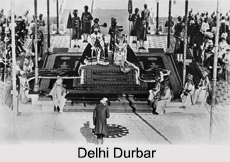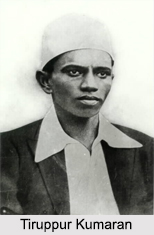 Modern History of Tamil Nadu shapes the culture and the sculptural background. The French East India Company was formed in 1664 and in 1666 the French representatives obtained Aurangzeb`s permission to trade in India.
Modern History of Tamil Nadu shapes the culture and the sculptural background. The French East India Company was formed in 1664 and in 1666 the French representatives obtained Aurangzeb`s permission to trade in India.
Establishment of French Trade in Tamil Nadu
The French East India Company soon setup trading posts at Pondicherry (Pudicherry) on the Coromandel Coast. They occupied Karaikal in 1739 and Joseph Francois Dupleix was appointed Governor of Puducherry. In Europe, the War of the Austrian Succession began in 1740 and eventually the British and the French forces in India were caught up in the conflict. There were numerous naval battles between the two navies along the Coromandel Coast. The French East India Company led by La Bourdonnais attacked the poorly defended Fort St. George in Madras in 1746 and occupied it. Robert Clive was one of the prisoners of war from this battle. The war in Europe ended in 1748 and with the peace of Aix-la-Chapelle Madras restored to the British.
Conflict between British and French
The conflict between the British and the French continued. This time the conflict was formed in political rather than military terms. Both the Nawab of the Carnatic and Nizams of Hyderabad positions were taken by rulers who were strongly sympathetic to the French. Chanda Sahib had been made Nawab of the Carnatic with Dupleix`s assistance, while the British had taken up the cause of the previous incumbent, Mohammed Ali Khan Walajah. In the resultant battle between the rivals, Robert Clive assisted Mohammed Ali by attacking Chanda Sahib`s fort in Arcot and took possession of it in 1751. The French assisted Chanda Sahib in his attempts to drive Clive out of Arcot. However the large Arcot army assisted by the French was defeated by the British. The Treaty of Paris (1763) formally confirmed Mahommed Ali as the Nawab of the Carnatic. It was a result of this action and the increased British influence that in 1765 the Emperor of Delhi issued a "firman" (decree) recognizing the British possessions in southern India.
Beginning of British Trade in South India
After granting the firman from Mughal Darbar, British East India Company began to take powers from French. Thus it led the conflict between the native princes and the British. But the British East India Company was becoming increasingly bold and ambitious in putting down resisting states. It was getting clearer day by day that the Company was incapable of governing the vast expanse of the captured territories. Opinion amongst the members of the British Parliament urged the government to control the activities of the British East India Company. Warren Hastings was appointed the first Governor-General. In 1784 Pitt`s India Act made the British East India Company subordinate to the British Government.
Anglo Maratha War
The Anglo-Mysore Wars of 1766 to 1799 and the Anglo-Maratha Wars of 1772 to 1818 put the Company in control of most of India. In a sign of the early resistance against the English control, the Palayakkarar chieftains of the old Madurai Kingdom, who had independent authority over their territories, ran into a conflict with the Company officials over tax collection.
Political Instability
In 1798 Lord Wellesley became the Governor-General of British East India Company. In the course of the next six years Wellesley made vast conquests and doubled the Company`s territory. He shut out the French from further acquisitions in India, destroyed several ruling powers in the Deccan and the Carnatic, took the Mughal Emperor under the company`s protection and compelled Serfoji, the king of Thanjavur to cede control of his kingdom. The Madras Presidency was established so that the territory under direct Company control could be administered effectively. The direct administration began to cause resentment among the people. In 1806 the soldiers of the Vellore cantonment rebelled when William Bentinck, the Governor of Madras decreed that the native soldiers should abandon all caste marks.
Beginning of British Rule in India
The discontent among the British, French and the native princes made the British to take the control of South India. The territories were exploded in 1857 into the Sepoy war, when the discontent began with the soldiers and the British. Although the rebellion had a huge impact on the state of the colonial power in India, Tamil Nadu was mostly unaffected by it. In consequence of the war, the British Government enacted the Act of 1858 to abolish the powers of the Company and transfer the government to the Crown.
British Rule in Tamil Nadu and Independence
In 1858 the British Government assumed direct rule in India. But the growing desire for independence began to gradually gather pace in the country and its influence in Tamil Nadu generated a number of volunteers to the fight against the British colonial power in the struggle for Independence. Notable amongst these are Tiruppur Kumaran, who was born in 1904 in a small village near Erode. Kumaran lost his life during a protest march against the British. Puducherry offered a place of refuge for the fugitives" freedom fighters trying to flee the British Police. Aurobindo Ghosh was one such living in Pondicherry in 1910. The poet Subramanya Bharathi was a contemporary of Aurobindo. Later the Tamils contributed much in Indian National Army (INA), founded by Subhas Chandra Bose to fight the British occupation in India. Lakshmi Sahgal from Tamil Nadu was a prominent leader in the INA`s Rani of Jhansi Regiment.






